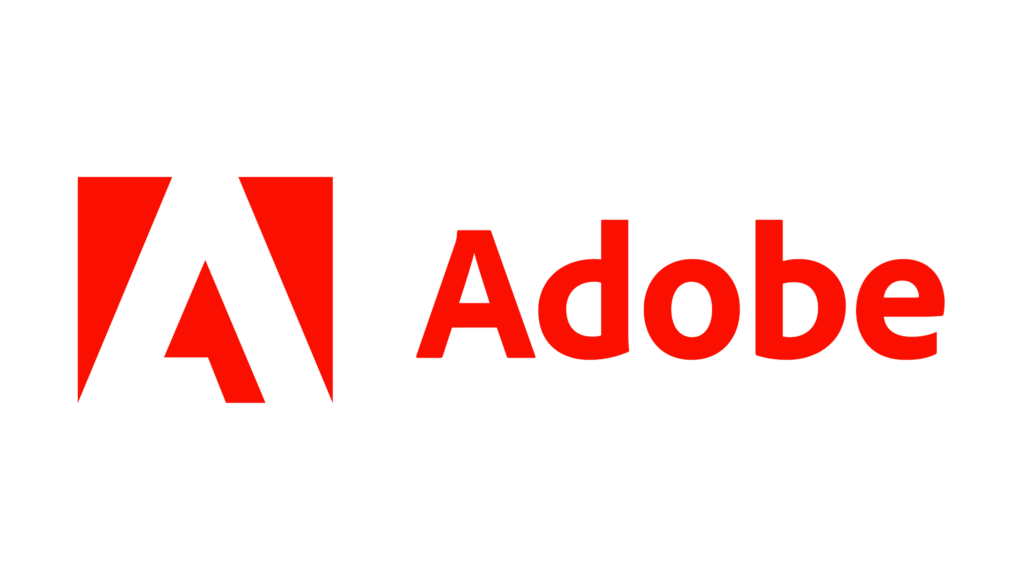Do you wonder how Adobe makes money? In this write up, we explore the Adobe Business Model to explain and understand how the Business Model of the tech giant is structured.
Adobe Inc., a name synonymous with creativity and design, has been a leader in the software industry for over three decades. Today, it stands as an exemplar of a successful business model, having evolved from offering packaged software to a subscription-based model. But how did Adobe come about? How did it manage to establish such a dominant position in the industry? This long-form blog post explores the fascinating journey of Adobe and delves into its business model using Alexander Osterwalder’s Business Model Canvas.
Adobe Inc.: The Beginning
Adobe Systems Incorporated, now known as Adobe Inc., was founded in December 1982 by Charles Geschke and John Warnock, two computer scientists from Xerox’s Palo Alto Research Center (PARC). They left Xerox with a vision to start a company that would revolutionize the way people create and communicate visually. Their goal was to “help people express and share their ideas in more compelling ways” – an ethos that continues to permeate through Adobe’s DNA today.
The company’s name, Adobe, was inspired by the Adobe Creek that ran behind Warnock’s home in Los Altos, California. The creek, in turn, was named after the Adobe bricks that were made from the creek’s clay and used in local construction. The name symbolized the founders’ commitment to enduring products that would serve as building blocks for creativity and innovation.
The first product they launched was PostScript, a page description language that played a pivotal role in the desktop publishing revolution. PostScript made it possible for texts and images to be accurately reproduced on print devices, bringing in a new era of design and publishing.
Since then, Adobe has built an impressive product portfolio, including globally recognized software such as Photoshop, Illustrator, InDesign, and Acrobat Reader. In 2013, Adobe undertook a significant transformation by transitioning from a packaged software business model to a cloud-based subscription model with Adobe Creative Cloud. Today, Adobe is a multi-billion dollar company that continues to lead the creative software industry.
The Business Model Canvas of Adobe
Before we dive into Adobe’s business model, let’s familiarize ourselves with Alexander Osterwalder’s Business Model Canvas (BMC). The BMC is a strategic management tool that allows companies to describe, design, challenge, and pivot their business model. The canvas is divided into nine building blocks: Customer Segments, Value Propositions, Channels, Customer Relationships, Revenue Streams, Key Resources, Key Activities, Key Partnerships, and Cost Structure.
Now, let’s use the BMC to examine Adobe’s business model.
- Customer Segments: Adobe has a wide range of customer segments, including individual users, creative professionals, students, educational institutions, small and medium businesses (SMBs), and large enterprises. Adobe has further segmented these categories based on usage patterns and subscription levels.
- Value Propositions: Adobe provides a comprehensive suite of creative software that serves as an industry standard. Its value propositions include high-quality software, constant updates, cloud storage, multi-device compatibility, and an extensive library of fonts, templates, and stock images. The software suite caters to a broad spectrum of creative needs, such as graphic design, video editing, web design, photography, and more.
- Channels: Adobe uses both direct and indirect channels. Customers can directly purchase and download software from Adobe’s website. In addition, Adobe’s products are distributed through resellers, system integrators, and independent software vendors. Adobe also leverages its partnership with Apple and Microsoft, which pre-install Adobe software like Adobe Acrobat Reader on their devices.
- Customer Relationships: Adobe maintains customer relationships through its Adobe Creative Cloud subscription model, which provides continuous access to its software suite and regular updates. Adobe also offers extensive learning resources, customer support, and community forums to enhance user engagement and build long-term relationships.
- Revenue Streams: Adobe’s primary revenue streams come from its subscription services, which include Adobe Creative Cloud, Adobe Document Cloud, and Adobe Experience Cloud. The subscription model ensures a steady flow of recurring revenue. Adobe also earns revenue from its digital media business and its digital experience segment, which provides tools for digital marketing, analytics, and more.
- Key Resources: Adobe’s key resources include its proprietary software, intellectual property rights, its talented workforce of designers, developers, and business professionals, and its well-established brand reputation. Additionally, Adobe’s extensive partner ecosystem and its IT infrastructure, which supports Adobe Cloud services, are also critical resources.
- Key Activities: Adobe’s key activities include software development, maintaining and updating its cloud platform, marketing and sales, customer support, and managing partnerships.
- Key Partnerships: Adobe has formed strategic partnerships with tech giants like Microsoft and Apple, software resellers, system integrators, and independent software vendors. These partnerships help extend Adobe’s reach and distribution. Adobe also collaborates with educational institutions worldwide, providing them with discounted access to its software.
- Cost Structure: Adobe’s primary costs arise from research and development, sales and marketing, cost of revenue (which includes the cost of delivering cloud services), and administrative expenses. The shift to a subscription-based model has helped Adobe manage its cost structure more effectively, as it mitigates the high upfront costs associated with packaged software.
Adobe’s Shift to a Subscription-Based Model
Adobe’s decision to shift from a packaged software model to a cloud-based subscription model was a turning point in the company’s history. In the packaged software model, customers purchased software licenses as a one-time transaction, receiving a physical copy of the software or a download link. However, this model had several limitations. It often led to revenue recognition issues, piracy concerns, and inconsistent revenue streams. Additionally, customers had to pay a substantial upfront cost, and obtaining updates or new versions often required additional purchases.
Recognizing these challenges, Adobe boldly transitioned to the Adobe Creative Cloud in 2013. This subscription-based model offers customers access to Adobe’s entire suite of software, regular updates, and cloud storage for a recurring fee. This move not only created a consistent revenue stream for Adobe but also enhanced customer value by providing continuous access to the latest software features. Moreover, the lower upfront cost made Adobe’s products more accessible to a wider audience, including students and freelancers.
The shift was initially met with resistance, as customers were not accustomed to paying a recurring fee. However, Adobe’s commitment to delivering continuous value through regular updates and added features gradually won over customers. Today, Adobe Creative Cloud has millions of subscribers worldwide, solidifying Adobe’s dominant position in the creative software industry.
Adobe’s journey provides a compelling example of how a company can evolve its business model to adapt to changing market dynamics and customer needs. Using Osterwalder’s Business Model Canvas, we can see how Adobe’s customer-centric approach, coupled with its strategic decisions and innovative offerings, have helped it build a sustainable and profitable business model.
Adobe’s story is a testament to the power of vision, innovation, and adaptability. From its humble beginnings in a garage in Silicon Valley to its current status as a global software giant, Adobe’s journey is a valuable lesson for aspiring entrepreneurs and business leaders. Whether it’s the pioneering work in developing the PostScript language or the bold decision to transition to a subscription model, Adobe has consistently pushed the boundaries of what’s possible, reinforcing its mission to “change the world through digital experiences.”
The exploration of Adobe’s business model also illustrates the dynamic nature of business models. Business models are not static; they must evolve with changing customer needs, technological advancements, and market dynamics. Adobe’s shift to a subscription-based model was not just a change in its pricing strategy; it represented a fundamental transformation in how the company delivered value to its customers.
This transformation was a strategic move that required careful planning and execution. Adobe had to redesign its software to support the cloud-based model, develop new capabilities to manage subscriptions, and invest in IT infrastructure to deliver cloud services. The company also had to manage the change from the customer’s perspective, addressing their concerns and demonstrating the value of the new model.
In retrospect, Adobe’s transition to the subscription-based model was a calculated risk that paid off handsomely. The shift has provided Adobe with a more predictable and stable revenue stream, improved customer relationships through continuous engagement, and enabled Adobe to reach new customer segments.
Moreover, the subscription model has positioned Adobe well for the future. As we move towards a more digital, connected world, the demand for creative software and digital tools is only expected to grow. Adobe’s comprehensive suite of software, combined with its cloud platform, places the company in a strong position to capitalize on this trend.
However, Adobe’s journey is far from over. As the company looks to the future, it faces new challenges and opportunities. New technologies such as artificial intelligence, augmented reality, and virtual reality are reshaping the creative landscape. At the same time, the software industry is becoming more competitive, with new players entering the market.
To stay ahead, Adobe will need to continue innovating, exploring new technologies, and finding ways to deliver even more value to its customers. The company’s ability to adapt its business model, as demonstrated by its transition to the subscription model, suggests that Adobe is well-equipped to navigate these changes.
In conclusion, the story of Adobe underscores the importance of a robust, adaptable business model in driving a company’s success. It highlights the role of innovation, customer-centricity, and strategic decision-making in shaping a company’s business model. Using Osterwalder’s Business Model Canvas, we can appreciate the intricacies and nuances of Adobe’s business model, providing us with valuable insights and lessons for our own entrepreneurial journeys.
Adobe’s journey is a testament to the power of vision, resilience, and innovation. From its groundbreaking work in developing the PostScript language to its bold transition to a subscription model, Adobe has consistently pushed the boundaries, reinforcing its mission to “change the world through digital experiences.” As we watch Adobe continue to evolve and shape the future of creativity, one can’t help but be inspired and excited about what the future holds.
Did you know? Creators like to use our co-working space in Bangalore
Learn more about our coworking space on our YouTube channel Work Theater Studios where we talk about a variety of topics including personal finance, entrepreneurship, business and life.
Did you know? We also have a private theatre in Bangalore.




